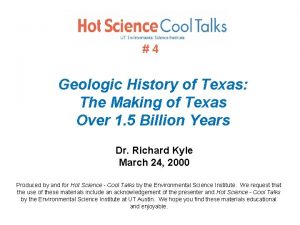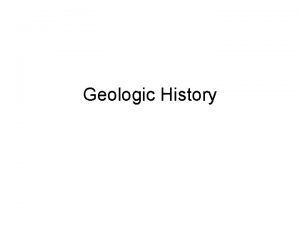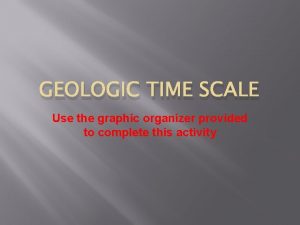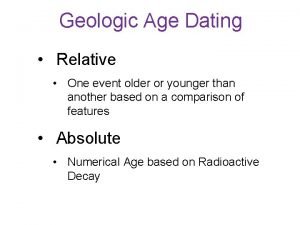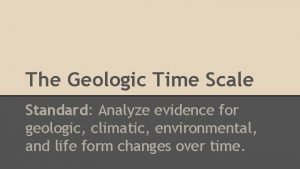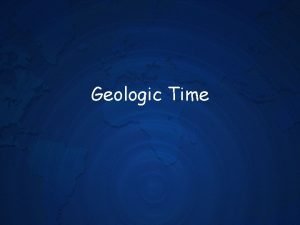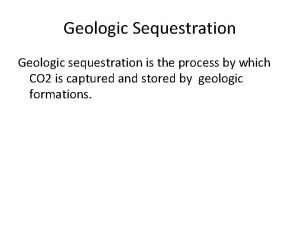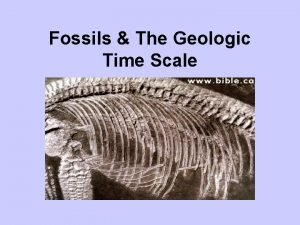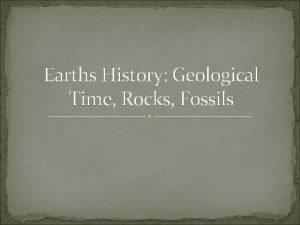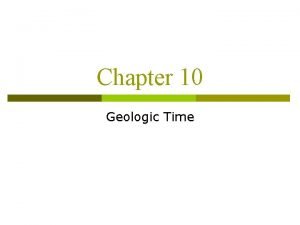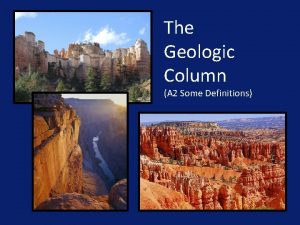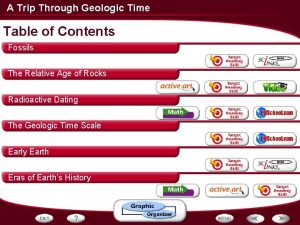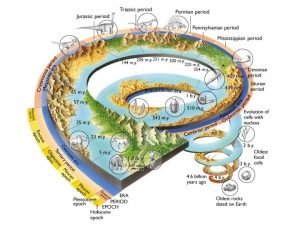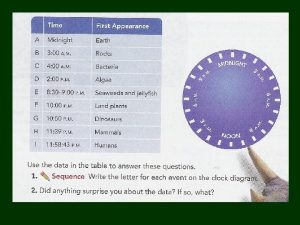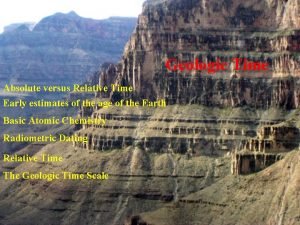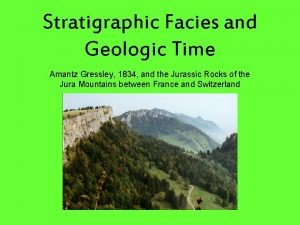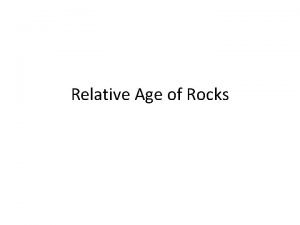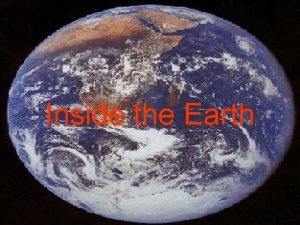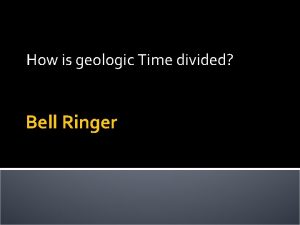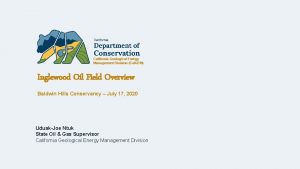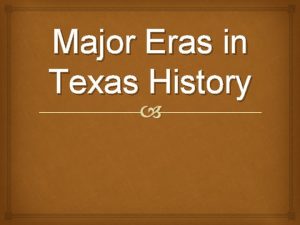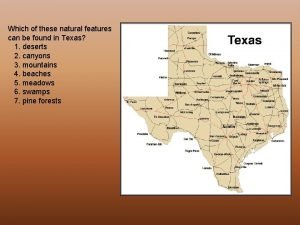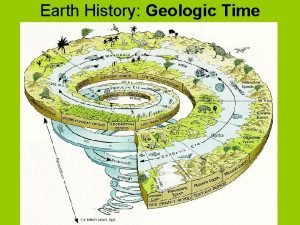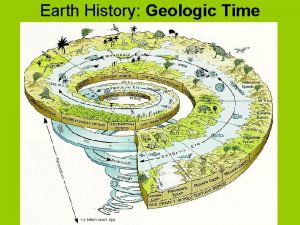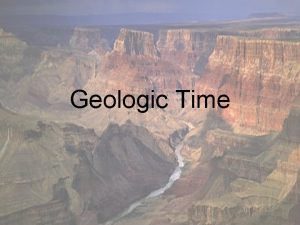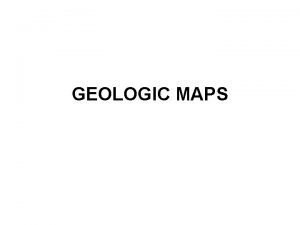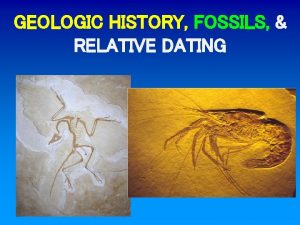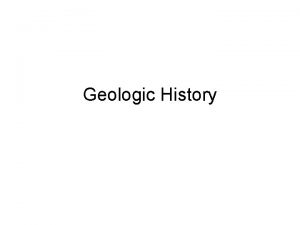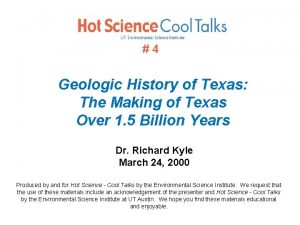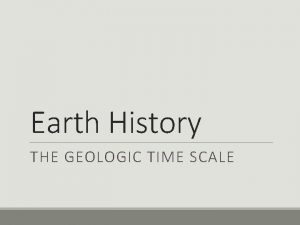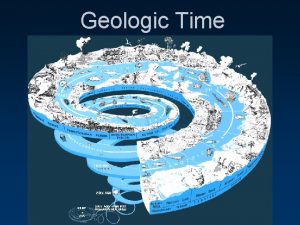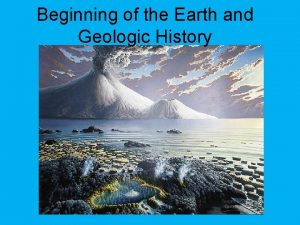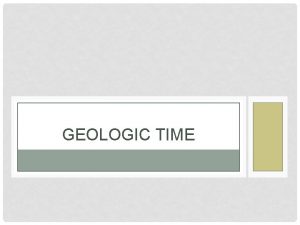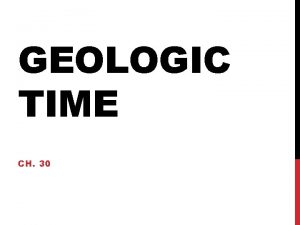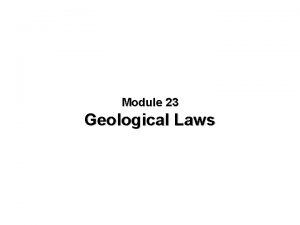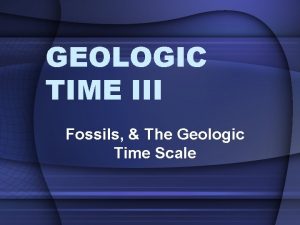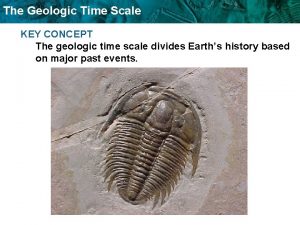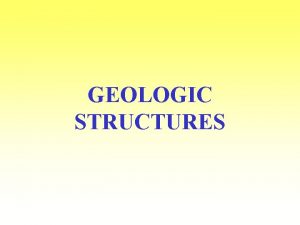4 Geologic History of Texas The Making of













































































- Slides: 77

#4 Geologic History of Texas: The Making of Texas Over 1. 5 Billion Years Dr. Richard Kyle March 24, 2000 Produced by and for Hot Science - Cool Talks by the Environmental Science Institute. We request that the use of these materials include an acknowledgement of the presenter and Hot Science - Cool Talks by the Environmental Science Institute at UT Austin. We hope you find these materials educational and enjoyable.

Geologic History of Texas: The Making of Texas over 1. 5 Billion Years J. Richard Kyle Department of Geological Sciences The University of Texas at Austin

Acknowledgments I am grateful to many individuals who have contributed to my understanding of the geologic history of Texas, particularly present and former colleagues at The University of Texas at Austin in the Department of Geological Sciences, the Bureau of Economic Geology, the Institute for Geophysics, and the Texas Memorial Museum. These individuals and institutions have contributed many of the illustrative materials contained in this CD-ROM. The presentation contained herein was made by J. Richard Kyle and is intended for educational purposes only. Any use of this work, partial or complete, must cite J. Richard Kyle and this Outreach Lecture Series Volume 4. No portion of this product may be reproduced or distributed in any form. March 2000

3. Texas Today

Plate Tectonics

Texas Geography Austin

Texas Geology Austin

7. Geologic time scale – major Texas events

Geologic Time Principles 8. Geologic Time Principles Several geologic principles are fundamental to using the rock record to interpret processes. Original Horizontality: Most rocks that form at the Earth's surface are deposited in essentially horizontal layers. Therefore, when layered rocks are not horizontal, they probably have been affected by postdepositional processes such as a tectonic event. Superposition: When layered rocks are formed, they are deposited in an orderly sequence with the oldest being at the base of the sequence and the strata becoming progressively younger upward. Therefore when a sequence of rocks differs from the predicted sequence, or layers are missing, then an explanation for the cause of these differences is required. Cross-cutting Relationships: Features such as faults or igneous intrusions generally cross-cut or affect all rocks that were present locally at the time of the faulting or intrusive event. Uniformitarianism: Present Earth processes are useful in understanding the types and rates of processes that have affected the Earth during past periods of geologic history.

Central Texas roadcut

Llano stratigraphic column

Time Interpretation Based on Llano Stratigraphic Column Llano rocks D B C A Geologic Time Erosion 0 Ma D Mesozoic Erosion 200 C Erosion 400 Paleozoic B 600 Erosion 800 1000 A Proterozoic 1200 1400

Central Texas geologic map

Deformed metamorphic rocks cut by granite dike Intrusive dike crosscutting folded metamorphic rocks.

Enchanted Rock

Granite slabs

Tectonic Model for the Precambrian History of the Llano Region

Tibet Plateau Himalayas India

Late Proterozoic Position of Texas

Precambrian – Paleozoic time chart

Complex topography on Enchanted Rock

Great Barrier Reef, eastern Australia Tree Covered Island Bird

PLATES Lower Paleozoic reconstruction

Lower Paleozoic life panorama

Marathon map Marathon Uplift

Marathon exposures Flat-lying Cretaceous Limestones Dip direction Haymond Formation

Caballos Novaculite aerial exposures

Marathon tectonic evolution

New Guinea

PLATES Late Paleozoic

Ouachita Orogeny and Formation of the Permian Basin

Delaware Basin

Delaware Basin Section

El Capitan Reef

Permian Basin filling by Evaporites OPEN OCEAN

Evaporation

Potash-bearing salt at Carlsbad

Mesozoic – Cenozoic time chart

PLATES Early Mesozoic

Rifting and Formation of the Gulf of Mexico Basin

Death Valley, California Volcano Salt Lake

Gulf of Mexico – Pacific Connection

Distribution of northern Gulf of Mexico Salt Diapirs

East Texas Basin Salt Structures

Salt in a Salt Dome Mine

Distribution of Cretaceous Limestones

Cretaceous Limestone Exposures along the Colorado River in Austin

Cretaceous Volcanoes in Central and South Texas Pilot Knob Uvalde area

Hawaii volcano

Cretaceous Interior Seaway

West Texas Cretaceous Stratigraphy

Formation of the Rocky Mountains Clean up

Mesozoic Life – Dinosaurs

PLATES End Cretaceous Asteroid Impact

Subduction off the Western Coast of Southern North America

Mid-Tertiary Volcanic Field

Explosive Volcanic Eruption

Bofecillos Mountains ignimbrites

West Texas caldera field

Laccolith Formation Corazones Peaks (laccoliths)

Solitario

Gulf Coast sedimentary sequence

Louisiana Bayou

Tertiary Lignite Deposits in East Texas

Gulf of Mexico Shoreline since the Cretaceous

Ogallala Formation OGALLALA FORMATION

Pecos River Headward Erosion

Rifting in West Texas and New Mexico

Salt Basin Guadalupe Peak (8, 749 feet) El Capitan

Cave Decoration at Carlsbad

Late Cenozoic Life

Ice Ages

Barrier island development

Texas Coastal Bend Brazos River Delta Mississippi River Delta Corpus Christi Bay Barrier Island Gulf of Mexico

Padre Island

Conclusion: Conclusion The geologic history of Texas is recorded in rocks that are exposed throughout the state and fill sedimentary basins. These rocks document more than a billion years of change. Those changes include the building and erosion of major mountain ranges, explosive volcanoes, strong earthquakes, vast deserts, evaporating salt basins, tropical forests, river and delta systems, tropical seas and barrier reefs, and beaches and barrier islands. Erosion of highlands filled subsiding sedimentary basins and adjacent continental margins. Colliding plates deformed, metamorphosed, and uplifted these materials to continue the rock cycle. Texas' abundant and varied mineral resources are products of these geologic events.

Professor Richard Kyle is the Third C. E. Yager Professor of Geology at The University of Texas at Austin. He received a Ph. D. from the University of Western Ontario and worked as a minerals exploration geologist for several companies prior to joining the UT faculty in 1978. Kyle is the author of more than 75 publications, including writing or editing six books. His research contributions have been recognized by awards from regional and national professional societies. Professor Kyle is the Editor of Ore Geology Reviews, an international economic geology journal. His teaching responsibilities and research interests include Texas geology, ore deposits geology and geochemistry, minerals exploration, industrial minerals, and multimedia approaches to geoscience education. He has received departmental and college awards for teaching, program development, and student advising. Since 1988, Kyle has taught a nonmajors course on the Geology and Mineral Resources of Texas.
 Compare geologic time with the geologic column.
Compare geologic time with the geologic column. Geologic history of texas
Geologic history of texas Geologic history meaning
Geologic history meaning Geological time scale graphic organizer
Geological time scale graphic organizer Geologic history
Geologic history Disconformity
Disconformity How is the geologic time scale organized
How is the geologic time scale organized How is the geologic time scale organized
How is the geologic time scale organized Caprock
Caprock Geologic time scale animals
Geologic time scale animals Fossils
Fossils Geologic time scale drawing
Geologic time scale drawing Geologic column definition
Geologic column definition A trip through geologic time answer key
A trip through geologic time answer key 4 divisions of geologic time
4 divisions of geologic time Moth scale
Moth scale Geologic time
Geologic time Geologic time
Geologic time Geologic time scale
Geologic time scale Facies
Facies Relative age
Relative age Geologic time scale poem
Geologic time scale poem Geologic layers of earth
Geologic layers of earth What is the longest subdivision in geologic time
What is the longest subdivision in geologic time 4 zoic eras
4 zoic eras Chapter 12 geologic time
Chapter 12 geologic time California department of conservation
California department of conservation Is making inference simply making a guess
Is making inference simply making a guess War making and state making as organized crime summary
War making and state making as organized crime summary Central texas museum of automotive history
Central texas museum of automotive history Texas history warm ups
Texas history warm ups Chicken war texas history
Chicken war texas history Texas history interactive notebook
Texas history interactive notebook Why do historians divide history into eras
Why do historians divide history into eras Hình ảnh bộ gõ cơ thể búng tay
Hình ảnh bộ gõ cơ thể búng tay Frameset trong html5
Frameset trong html5 Bổ thể
Bổ thể Tỉ lệ cơ thể trẻ em
Tỉ lệ cơ thể trẻ em Voi kéo gỗ như thế nào
Voi kéo gỗ như thế nào Chụp phim tư thế worms-breton
Chụp phim tư thế worms-breton Chúa yêu trần thế alleluia
Chúa yêu trần thế alleluia Môn thể thao bắt đầu bằng chữ f
Môn thể thao bắt đầu bằng chữ f Thế nào là hệ số cao nhất
Thế nào là hệ số cao nhất Các châu lục và đại dương trên thế giới
Các châu lục và đại dương trên thế giới Cong thức tính động năng
Cong thức tính động năng Trời xanh đây là của chúng ta thể thơ
Trời xanh đây là của chúng ta thể thơ Mật thư tọa độ 5x5
Mật thư tọa độ 5x5 Làm thế nào để 102-1=99
Làm thế nào để 102-1=99 độ dài liên kết
độ dài liên kết Các châu lục và đại dương trên thế giới
Các châu lục và đại dương trên thế giới Thể thơ truyền thống
Thể thơ truyền thống Quá trình desamine hóa có thể tạo ra
Quá trình desamine hóa có thể tạo ra Một số thể thơ truyền thống
Một số thể thơ truyền thống Cái miệng nó xinh thế
Cái miệng nó xinh thế Vẽ hình chiếu vuông góc của vật thể sau
Vẽ hình chiếu vuông góc của vật thể sau Biện pháp chống mỏi cơ
Biện pháp chống mỏi cơ đặc điểm cơ thể của người tối cổ
đặc điểm cơ thể của người tối cổ Thế nào là giọng cùng tên? *
Thế nào là giọng cùng tên? * Vẽ hình chiếu đứng bằng cạnh của vật thể
Vẽ hình chiếu đứng bằng cạnh của vật thể Fecboak
Fecboak Thẻ vin
Thẻ vin đại từ thay thế
đại từ thay thế điện thế nghỉ
điện thế nghỉ Tư thế ngồi viết
Tư thế ngồi viết Diễn thế sinh thái là
Diễn thế sinh thái là Các loại đột biến cấu trúc nhiễm sắc thể
Các loại đột biến cấu trúc nhiễm sắc thể Thế nào là số nguyên tố
Thế nào là số nguyên tố Tư thế ngồi viết
Tư thế ngồi viết Lời thề hippocrates
Lời thề hippocrates Thiếu nhi thế giới liên hoan
Thiếu nhi thế giới liên hoan ưu thế lai là gì
ưu thế lai là gì Khi nào hổ mẹ dạy hổ con săn mồi
Khi nào hổ mẹ dạy hổ con săn mồi Sự nuôi và dạy con của hươu
Sự nuôi và dạy con của hươu Hệ hô hấp
Hệ hô hấp Từ ngữ thể hiện lòng nhân hậu
Từ ngữ thể hiện lòng nhân hậu Thế nào là mạng điện lắp đặt kiểu nổi
Thế nào là mạng điện lắp đặt kiểu nổi History also history physical
History also history physical Gulf coast prairies and marshes climate
Gulf coast prairies and marshes climate

